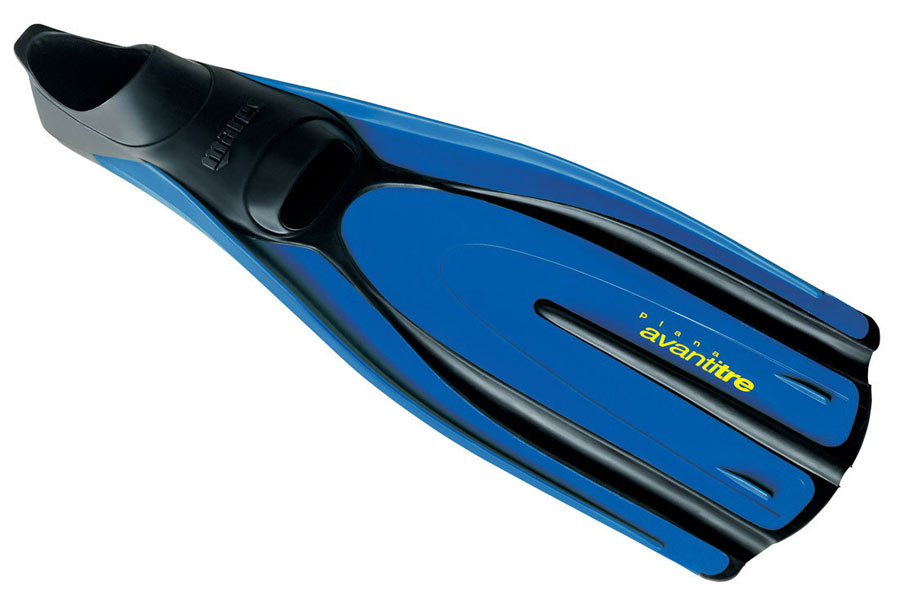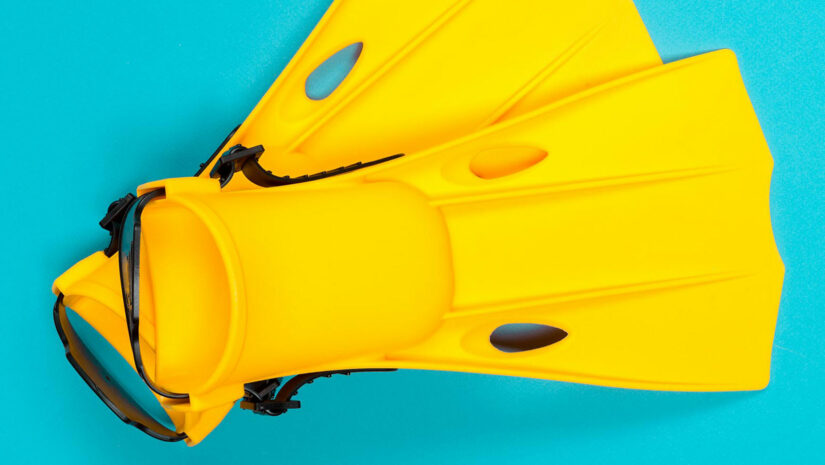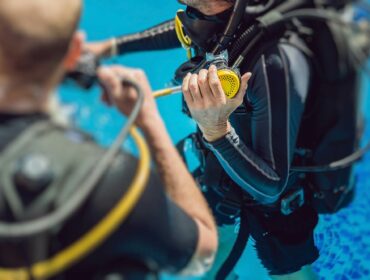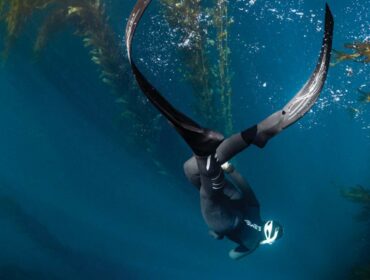Regarding dive gear, choices cannot be limited to just two options. There are abundant variations for each type of dive gear because each diver has unique needs. When submerging yourself in an environment that isn’t meant to keep you alive, comfort, utility, and safety become paramount.
Fins are one of those items that require careful selection. These essential pieces of scuba diving equipment can be challenging to substitute once you get used to having your own—especially if you are looking at the difference between open-heel and full-foot fins.
Believe it or not, choosing between these two very different styles can make or break your dive. This is because your fins serve as your locomotion for the duration of your dive.
Read on to better understand their differences and how each style can improve your dives.
Open-Heel vs Closed-Heel Fins: What’s the Difference?

Mares Plana Avanti Tre Full Foot Fins | Available on Scuba.com
Full-Foot Fins
Many divers prefer full-foot fins for the simplicity of their operation: you step into a molded foot pocket that keeps your foot in place in the fin. Simply put, they’re like closed shoes that enclose your entire heel (but not necessarily your toes, as those are called open-toed fins).
With full-foot fins, there is no need to wear any dive boot or slipper, so they are often referred to as barefoot fins or warm water fins. This is undoubtedly true, for if you dive in temperatures lower than 60 degrees Fahrenheit in full-foot fins, your feet will let you know later!
Depending on the fit of a full-foot fin, there can be a lot of pressure placed on the top of the foot and toes or, worse, cause blisters and cuts if the fit is not correct, which leads some to have a tough time choosing a pair to rent or abandon them in favor of strap fins.
Then again, easy-to-wear closed-heel fins are still the more convenient option for quick dives and snorkeling adventures in warm, tropical waters.
Key Characteristics of Full-Foot Fins:
- Easy to wear and remove
- It can be worn barefoot
- Proper fit is more critical
- It doesn’t offer thermal protection
- Best for warm water dives
Recommended Products:
- Oceanic Viper Full Foot Fins
- Aqua Lung Express Full Foot Fins
- Mares Avanti Super-Channel Full Foot Fins
- Cressi Reaction Pro Full Foot Fins

Oceanic Viper Open Heel Fins
Open-Heel Fins
As the name suggests, open-heel or strap fins don’t cover the heel. Instead, they feature rubber straps that can often be adjusted for a more comfortable fit.
Spring straps are the latest innovation to take the dive gear industry by storm, alleviating any of the troublesome features of regular strap closures and durability. This feature makes open-heeled fins suitable for those who want to dive in colder waters because the adjustable nature of the open-heel fin makes it possible to wear several sizes (and thicknesses) of dive boots or socks with the fin.
Allowing dive boots with open-heeled fins also helps protect and provide traction for the feet during rocky shore dives. Some divers have even seen improvements in propulsion from using open-heel fins, particularly a strengthened bond between foot and fin.
Key Characteristics of Open-Heeled Fins:
- Adjustable for a more custom fit
- Worn-over booties or diving socks
- Ideal for scuba diving
- Slightly bulkier and more expensive
- Increases drag on the surface
Recommended Products:
Which One Should I Use?
The first step to choosing the right foot style for your fins is considering your diving environment. Is the water going to be warm or cold? Are you going to be doing some walking before, after, or in the middle of your dive? Your answers to these basic questions are enough to decide which type of heel you’ll need for a particular dive.
For warm-water diving, full-foot fins are usually your first option. They’re generally affordable and easy to wear (and remove). They’re also an excellent option for those on a budget or those who don’t want to waste time wearing their fins before jumping into the water.
On the other hand, open-heeled fins are the way to go if you need extra thermal protection, as they allow you to wear booties and socks. The additional foot protection also helps you avoid blisters and cuts when walking on the beach, through stairs, or even on rocks to get to the dive site.
Scuba diving fins tend to be open-heeled as they offer more comfort and a customized fit for your feet when your boots compress due to increased water pressure at specific depths. Meanwhile, you’ll find a lot of snorkeling fins with closed heels as many snorkelers like to bring fewer pieces of equipment with them, plus open-heeled designs tend to increase drag on the water surface. There are also strap fins designed to be worn barefoot—in this case; your choice will depend on other factors, such as size availability and your budget.
To Make the Right Choice, Do Your Research
Choosing the perfect pair of fins for you certainly doesn’t end with your decision between heel vs. heel fins. There’s also the choice between blade and split fins, as well as blade lengths (relating to the debate between snorkeling vs scuba fins). If anything, this only means that you’ll need to research and ask the right questions before purchasing your first set of fins and other diving equipment.
So, are you an open-heel or full-foot kind of guy or gal? We’d love to hear your thoughts!





